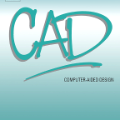The Computer-aided Diagnosis (CAD) system for skin lesion analysis is an emerging field of research that has the potential to relieve the burden and cost of skin cancer screening. Researchers have recently indicated increasing interest in developing such CAD systems, with the intention of providing a user-friendly tool to dermatologists in order to reduce the challenges that are raised by manual inspection. The purpose of this article is to provide a complete literature review of cutting-edge CAD techniques published between 2011 and 2020. The Preferred Reporting Items for Systematic Reviews and Meta-Analyses (PRISMA) method was used to identify a total of 365 publications, 221 for skin lesion segmentation and 144 for skin lesion classification. These articles are analyzed and summarized in a number of different ways so that we can contribute vital information about the methods for the evolution of CAD systems. These ways include: relevant and essential definitions and theories, input data (datasets utilization, preprocessing, augmentations, and fixing imbalance problems), method configuration (techniques, architectures, module frameworks, and losses), training tactics (hyperparameter settings), and evaluation criteria (metrics). We also intend to investigate a variety of performance-enhancing methods, including ensemble and post-processing. In addition, in this survey, we highlight the primary problems associated with evaluating skin lesion segmentation and classification systems using minimal datasets, as well as the potential solutions to these plights. In conclusion, enlightening findings, recommendations, and trends are discussed for the purpose of future research surveillance in related fields of interest. It is foreseen that it will guide researchers of all levels, from beginners to experts, in the process of developing an automated and robust CAD system for skin lesion analysis.
翻译:用于皮肤损伤分析的计算机辅助诊断系统(CAD)是一个新兴的研究领域,有可能减轻皮肤癌筛查的负担和成本,研究人员最近表示越来越有兴趣开发这种 CAD系统,目的是向皮肤学家提供方便用户的工具,以减少人工检查带来的挑战。本篇文章的目的是为2011年至2020年出版的尖端 CAD技术提供完整的文献审查。 系统审查和元分析(PRISMA)所用的“报告项目”方法可用于确定总共365份出版物,221份用于皮肤损伤分类,144份用于皮肤损伤分类。这些文章通过多种方式分析和总结,以便我们能够为CAD系统演变的方法提供重要信息。这些方式包括:相关和基本的定义和理论、投入数据(数据集利用、预处理、增强和纠正失衡问题),方法配置(技术、架构、模块框架和损失),培训策略(功能清晰分析)和144份皮肤损伤分类分类分类系统。我们打算将这些“数据分析”和“数据分析”作为基础分析的一个基础,用于评估工具,我们用于分析的“业绩分析”和“数据分析”的流程。我们打算将这些“数据分析”作为基础分析中的一项基础分析,将“数据分析”用于评估,将“数据分析”中的“数据分析”用于评估“数据分析”的“数据分析”和“数据分析”的“数据分析”的“数据分析”的“数据分析”的“数据分析”的“数据分析”的“数据分析”的“数据分析”作为基础。


